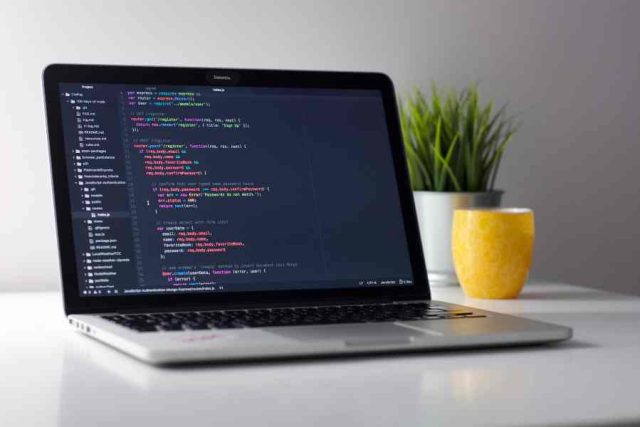The computer responds to input like any other device, and if it receives accurate information, it will draw correct conclusions. This frequently happens, especially when programming, because computer languages are highly complex. It’s simple to overlook that a computer has no independent thought and responds to input. Here are some guidelines to help you stop your computer from drawing erroneous assumptions.
Take Care Of Look-Ahead Bias
You risk look-ahead bias if you utilize a model or analysis that depends on future data. When a model or study bases a choice on unknowable future data points, this is known as scenario analysis. Due to the lack of consideration for potential future modifications, this may result in incorrect results.
It’s critical to comprehend the causes of look-ahead bias and take action to lessen its impact to prevent this. This can entail developing a system for tracking changes in the data over time or utilizing models that rely on past data rather than future data points. You can fix an accidental lookahead bias whenever you notice one. Here is where you make use of precise, clean data sets. You might as well benefit from validation methods.
Review Your Output
Once you have been thorough in entering information, carefully evaluate the computer’s analysis of facts. If there happen to be any inconsistencies within your input data, then the machine may make erroneous assumptions. However, these errors are manageable and can easily be averted if caught promptly.
It is essential to double-check the authenticity of your output, even if it initially appears accurate. To guarantee accuracy, you must inspect each outcome by running simulations or other inspections against what was originally entered as input. In this way, you can be certain that every result is reliable and dependable.
The output might be accurate in some unique circumstances, but it might differ from what you wanted. If this is the case, double-check your entry to ensure everything was typed in correctly.
Stay Up To Date
Staying informed on the newest trends in coding is no longer a challenge. You can access instructional blogs written by industry experts or visit sites like Stack Overflow to acquire up-to-date knowledge and skills.
Also, you have to ensure your system has all the bug fixes, security upgrades, and other updates that can impact how well it performs. This is crucial for all software types, but it’s crucial for coding because mistakes and flaws might result in incorrect conclusions.
To ensure your system is functioning optimally, you should make a habit of routinely checking the website for updates that improve performance or resolve any previously reported issues. Doing so guarantees that your software is making calculated decisions instead of baseless ones.
Check For Bugs
These are the little mistakes that can lead a computer to misinterpret data. That can be a typo or a more severe problem with how the code is written. In either case, these vulnerabilities need to be found and repaired before they do any harm.
This entails periodically debugging your code and checking for typos or other errors that could produce erroneous results. Having a group of individuals analyze the code and serve as a second set of eyes to spot any mistakes that might have slipped through the gaps is also beneficial.
Bug tracking software is frequently used to track known issues, making it easier for engineers to find and address them. This helps to ensure that the system is operating correctly and that no erroneous conclusions are drawn due to defects.
Implement Quality Control Procedures
At this juncture, it is critical to step in and verify the computer’s output. Quality control protocol aids in assuring detailed accuracy and bug-free results. This can include examining any issues users have reported or executing assessments on the data.
You could also create your internal coding standard, such as guidelines for using particular languages or coding style guides. This makes it easier to make sure the code is consistent and adheres to industry standards, which reduces the likelihood that it may result in incorrect conclusions.
Adopting an intelligent approach to coding includes setting up automated tests that guarantee the code runs as anticipated. This may include executing unit tests or integration tests to confirm accurate input and output results.
Put If-Then Statements To Use
If-then statements in programming are vital commands that instruct the computer to act upon a certain situation. By utilizing this construct, you can configure your machine such that it will only execute code when triggered by predetermined conditions.
In this manner, the computer will avoid making assumptions and instead go on to the following line of code if data points do not match the anticipated conclusion. This makes it less likely for the computer to draw incorrect conclusions due to faulty input. If-then statements are frequently used in conjunction with validation systems and other kinds of quality control methods.
To engage in more intensive coding, incorporate if-then statements and other options to enable the computer to sift through input data for patterns and correlations. This approach will make your programming far more complex and powerful.
Check Your Input
To guarantee that you don’t make costly mistakes, it is critical to double-check the exactness of every piece of data before entering it into your computer. This includes vital information like names and dates in addition to any other details which may lead to a mistake if not entered correctly. By verifying each entry prior to submitting the data, you can feel confident that what you enter is correct.
You can use error-checking software as an alternative to reduce typos and other problems. This application will scan your input for any mistakes and notify you if it finds any so that you can make any necessary changes before inputting the data into the system.
In cases where you have no jurisdiction over the input data, utilizing a validation system is essential. This powerful software tool will quickly detect any errors in your data and promptly alert you of its findings. By using this method of verification, both time and money can be saved by avoiding costly mistakes due to incorrect information or typos.
Understanding how your computer processes data is crucial, and taking precautions to stop it from drawing erroneous conclusions is crucial. This can be accomplished by validating the input, scrutinizing the output, keeping abreast of problem fixes, and comprehending the causes of look-ahead bias. Putting these procedures into practice ensures that your computer draws reliable conclusions from accurate data.














